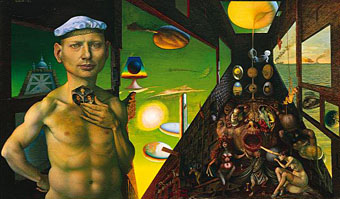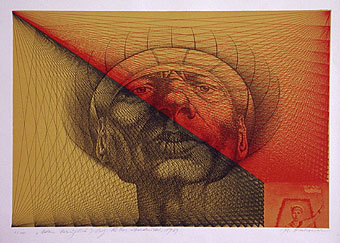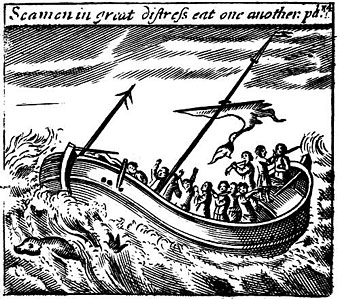February from a calendar series by the
very accomplished Maurice Heerdink.
Elsewhere on { feuilleton }
• The gay artists archive
A journal by artist and designer John Coulthart.
Art
February from a calendar series by the
very accomplished Maurice Heerdink.
Elsewhere on { feuilleton }
• The gay artists archive
L: Relationship of the Human Figure with that of the Eagle.
R: Relationship of the Human Figure with that of the Ram.
From Dissertation sur un Traité de Charles Lebrun concernant le apport de la Physionomie Humaine avec Celle des Animaux (1806), in which the First Painter to Louis XIV attempted to demonstrate a correlation between the souls of men and the appearances of animals. See the complete set of engravings (by L-J-M Morel d’Arleux) here.
Elsewhere on { feuilleton }
• The etching and engraving archive

Die Arche des Odysseus (1948–1956).

Adam Bei Sich (1969).
A major Austrian painter and printmaker, Rudolf Hausner studied art at the Academy in Vienna from 1931 to 1936, under Fahringer and Sterrer. Many of his early paintings were confiscated and branded as ‘degenerate’ by the ruling Nazi party in 1938. In 1941 Hausner was drafted by the German army and remained a soldier until the war’s end in 1945. After the war he returned to Vienna and immersed himself in studies dealing with the unconscious and with the art of Surrealists, particularly that of Max Ernst. Along with Wolfgang Hutter and Anton Lehmden, Rudolf Hausner founded the Viennese School of Fantastic Realism in 1947. During the 1950s and 1960s this became one of Austria’s most important movements and Hausner was its most influential artist. During this time he also held principal teaching posts at the academies of Vienna and Hamburg.
Equally gifted as a painter, lithographer and etcher, Hausner’s complex art is based upon potent symbols and imagery. Primary among these is the constantly recurring image of the first man, Adam, who is part autobiographical and part archetype. Another compelling image is that of the man or boy in a sailor’s cap. Hausner claimed that this image symbolized the myth of Odysseus and his epic voyages on the seas. It also, however, is representative of the artist’s own boyhood and the integrated relationships of youth and age within the self.
Elsewhere on { feuilleton }
• The fantastic art archive

Seamen in great distress eat one another (1685).
From Wonderful Prodigies of Judgement and Mercy by Robert Burton. One of those incidents, like witch burnings and other executions, whose quaint period depiction is at considerable odds with what would have been an appalling reality. This picture can’t help but bring to mind Théodore Géricault’s masterpiece, The Raft of the Medusa, based on a later occurrence of sea-faring cannibalism.
The Raft of the Medusa (1819).

I photographed Géricault’s grave when I was in Père Lachaise cemetery in September. As well as the statue of the artist lounging atop his monument, the tomb features panels at the front and sides with bronze reliefs of his most famous works. The Raft of the Medusa faces the path.
Previously on { feuilleton }
• Druillet meets Hodgson
• Rogue’s Gallery: Pirate Ballads, Sea Songs, and Chanteys
• Davy Jones
Arch in the Sky (2002).
It’s that pose again. More paintings and drawings here.
Elsewhere on { feuilleton }
• The gay artists archive
• The recurrent pose archive